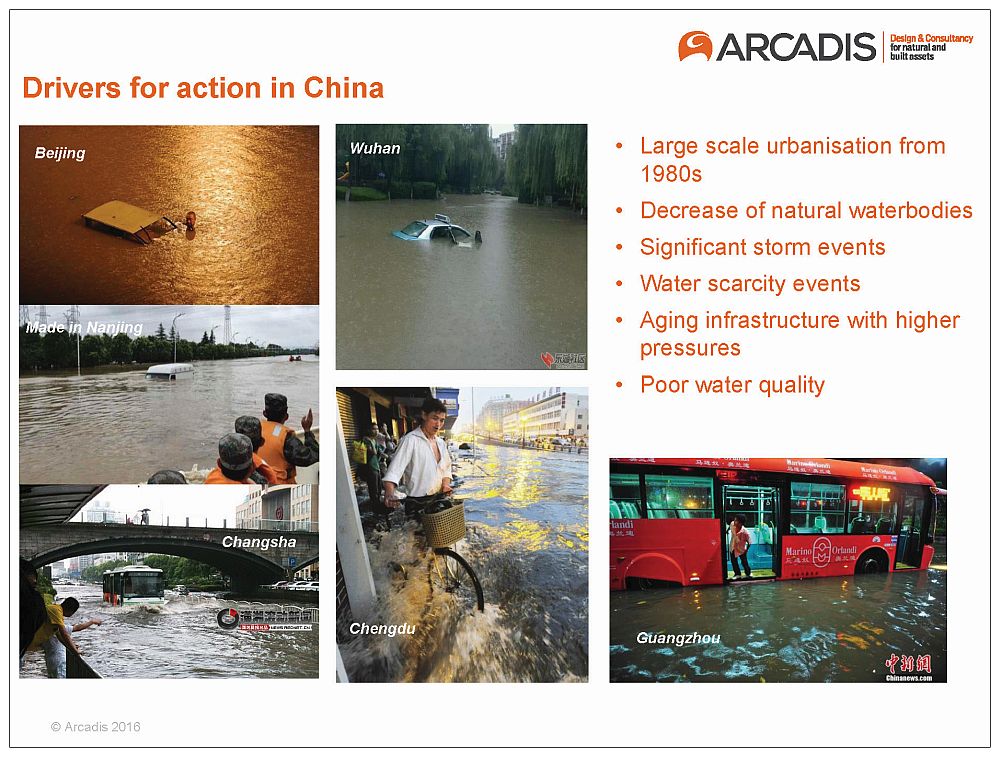WUHAN IS CHINA’S LEADING ‘SPONGE CITY’: Under this nation-wide program, Wuhan and the other participating areas must ensure that 20% of their urban land includes sponge features by 2020, with a target of being able to retain 70% of storm water
Note to Reader:
Wuhan was once known as “the city of a hundred lakes”. It had 127 lakes in its central area alone in the 1980s, but decades of rapid urbanisation mean only around 30 survive.
Located at the merging of the Yangtze and Han rivers, this low-lying city, the capital of Hubei province, has always been prone to floods, especially in the summer monsoon months.

The 2016 Floods Were a Wake-Up Call
“(Wuhan) has always been prone to floods. Street names are often the only reminder of the lakes and pools that been filled in and built over, but in 2016, after a week of torrential downpours, they filled with water again. With the  latest UN figures projecting Wuhan’s population will exceed 10 million by 2035, the situation remains critical,” wrote Li Jing in the Guardian newspaper’s series titled The Next 15 Megacities.
latest UN figures projecting Wuhan’s population will exceed 10 million by 2035, the situation remains critical,” wrote Li Jing in the Guardian newspaper’s series titled The Next 15 Megacities.
“The year before the floods, Wuhan had been declared one of the country’s first 16 ‘sponge cities’ – areas piloting ecologically friendly alternatives to traditional flood defences and drainage systems.
“Under the sponge city scheme, Wuhan and the other participating areas must ensure that 20% of their urban land includes sponge features by 2020, with a target of being able to retain 70% of storm water. For Wuhan that equates to just over 170 sq km of a total urban area of 860 sq km
“More than 38.5 sq km of the city has been retrofitted so far.”
To Learn More:
To read the complete article published in the Guardian newspaper, download Inside China’s leading ‘sponge city’: Wuhan’s war with water
Also, read an earlier story published by the Guardian: China’s ‘sponge cities’ are turning streets green to combat flooding
And after that, scroll through this PowerPoint presentation on Wuhan: Living with Water: The Sponge City Programme
Finally, go to The next 15 megacities.


